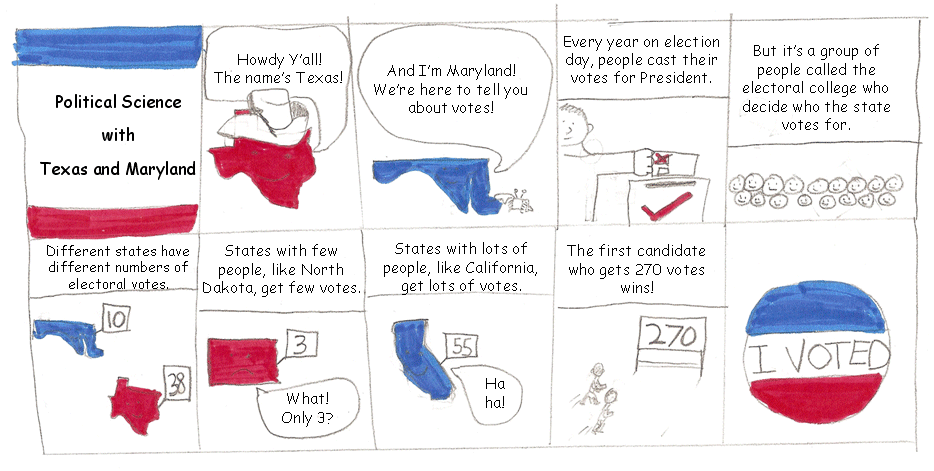Editor
Ethan
Article
by Ethan
Contact Us
Introduction
Cartoon
by Rosa
Political science is the study of human behavior when it comes to politics. It’s why we vote for whom we do. It’s why some states are almost always going to vote for a Democrat, such as Maryland, and why other states, like Texas, are going to go Republican.
A lot of states almost always are either red or blue states. (Red is Republican and blue is Democrat). The nominees don’t campaign much in these states because they know who is going to win. There are some states called battleground states. These states are undecided and could go either way. These are the states that the nominees want to campaign in. The major battle ground states for this election were Ohio, Wisconsin, Virginia, Colorado, Nevada, Iowa, Pennsylvania, and Florida.
Red or blue?
Party Politics
&
Election Detection
Do you like to know how things work? Come here to find out how the universe works—from the world of cells to the world of galaxies. You will find out what we know and what we don’t know. And who knows…maybe one day you will help figure out the mysteries of our existence!
This issue is dedicated to the science of politics.
When people vote for the president they don’t just count up the votes for one nominee and the votes for the other. They have a thing called the Electoral College. Each state has a certain number of delegates. The state gets one delegate per representative they have in the house, and two for each senator. They count up the votes in each state and the nominee who has more votes in that state gets the delegates. This means that a nominee can actually get more votes in the country, but still not win the election. This happened when George Bush ran against Al Gore. Gore got more votes but Bush still won the electoral college vote.
What is the electoral college?

















